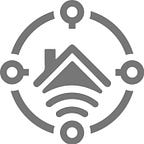Implementing IoT in Buildings to Improve Energy Efficiency and Reduce Energy Waste
As climate change proceeds, sustainability has become less of a slogan and more of a reality. Greenhouse gas emissions (GHG) are at the forefront of this environmental impact. Commercial buildings consume 40% of global energy use and Inefficient activities can account for 20–30% of total energy waste, therefore without a doubt, energy is one of the most debated issues in today’s world. The most contested problems in the energy sector are environmental sustainability and how firms and individuals may lessen the environmental impact of human activities. Energy is consumed everywhere, whether in HVAC systems, workplace lighting, or product manufacturing. However, overuse of energy resources damages the environment and the management’s finances in addition to being wasteful.
The question is, how can we improve energy efficiency and reduce energy waste in buildings?
The answer is very simple, IoT
IoT is a relatively new technology, having just gained popularity in the last two decades. Building owners and operators can make their buildings more energy-efficient by utilizing Internet of Things (IoT) technologies. Building automation is based on a network of interconnected devices, controls, and systems that is transforming building settings all over the world. The connection between IoT and energy efficiency is a critical component of intelligently constructed settings.
Energy efficiency reduces indirect CO2 emissions, and carbon neutrality requirements are accomplished in a prudent manner. We will be able to reduce global energy consumption by 10% if we can eliminate 20–30% of energy waste. So, simply by enhancing how we work, we can increase the likelihood of long-term success.
How does the use of IoT foster energy efficiency
Buildings use the Internet of Things to help reduce the rising amount of energy waste. It extends asset life, improves operational effectiveness, and decreases equipment breakdown and poor indoor air quality. Optimal energy consumption demands are not threatened when ensuring these motives.
IoT-based intelligent devices can help us increase the energy efficiency in our buildings, such as
- Smart meters, similar to how your home’s normal meter measures and logs energy use information, a smart meter does the same. One benefit of a smart meter for consumers is the ability to monitor energy consumption. The digital face of most smart meters shows real-time data on how much energy you’ve used. You can make modifications by being aware of how much energy you consume. Additionally, Enconyx provides a comprehensive range of intelligent products to improve buildings’ energy efficiency, including smart HVAC systems, smart thermostats, and features like transparent billing that facilitate work and save operational expenses.
- A smart thermostat is one that can be controlled via a phone, tablet, smart speaker, or other internet-connected devices. You can program your preferred temperature settings on smart thermostats, which can also be included in your home automation systems. A thermostat uses the current temperature to determine when to switch on and off the fan, AC, or heat. The only difference between it and a light switch is that temperature is taken into account when deciding when to turn on and off the fan, heat, and cooling.
- Smart HVAC systems “learn” where and how much heat or air to bring to each area of the building because building occupants and owners don’t want to waste time fiddling with the heating or cooling. In order to keep the system functioning properly, smart sensor systems monitor external sources and internal operations both in the building and in the units themselves.
- Air quality and environmental monitoring, data is gathered over time by integrated environmental sensors in modern smart building solutions, making it simpler to assess and monitor air quality. These sensors keep an eye on pollutants, particle matter, and dangerous organic compounds. Smart building air quality monitors are able to measure and report AQI for central monitoring as well as set thresholds in the event that the air quality of a particular room, floor, or building deviates from acceptable ranges.
Energy is always a valuable resource, but its value varies according to the season and time of day. Facility managers can alter the energy use schedule for some of the electronics in a building to lessen demand during peak hours by using these IoT device systems to monitor the real-time energy use of a building. In this way, some of the huge machines can be operated with less expensive, off-peak electricity pricing.
Still unsure how to do these, don’t worry, Enconyx got you covered.
Enconyx’s Intelligent buildings are planned and built with systems that maximize operating efficiency and significantly reduce carbon footprint. Buildings become more sustainable and efficient by connecting systems to smart technology. Visit our website https://enconyx.com/ to know more about reducing energy consumption with the implementation of smart building technology.
